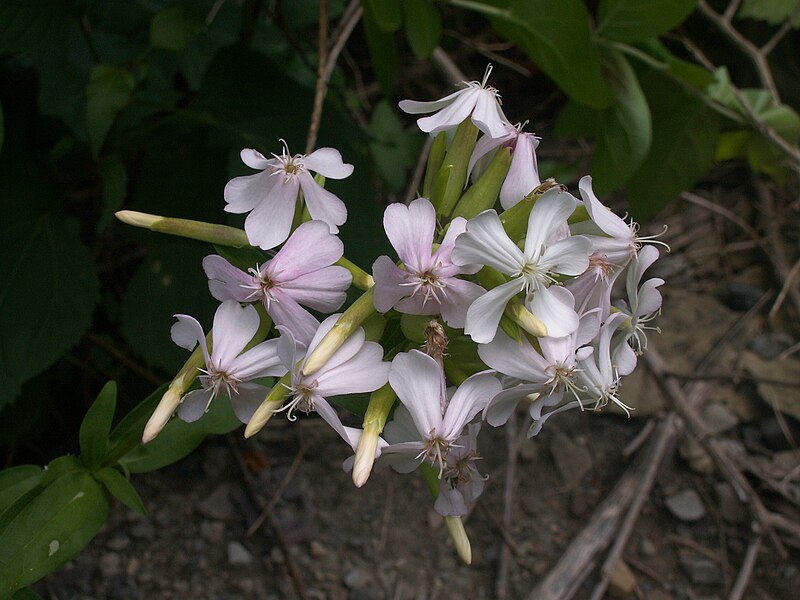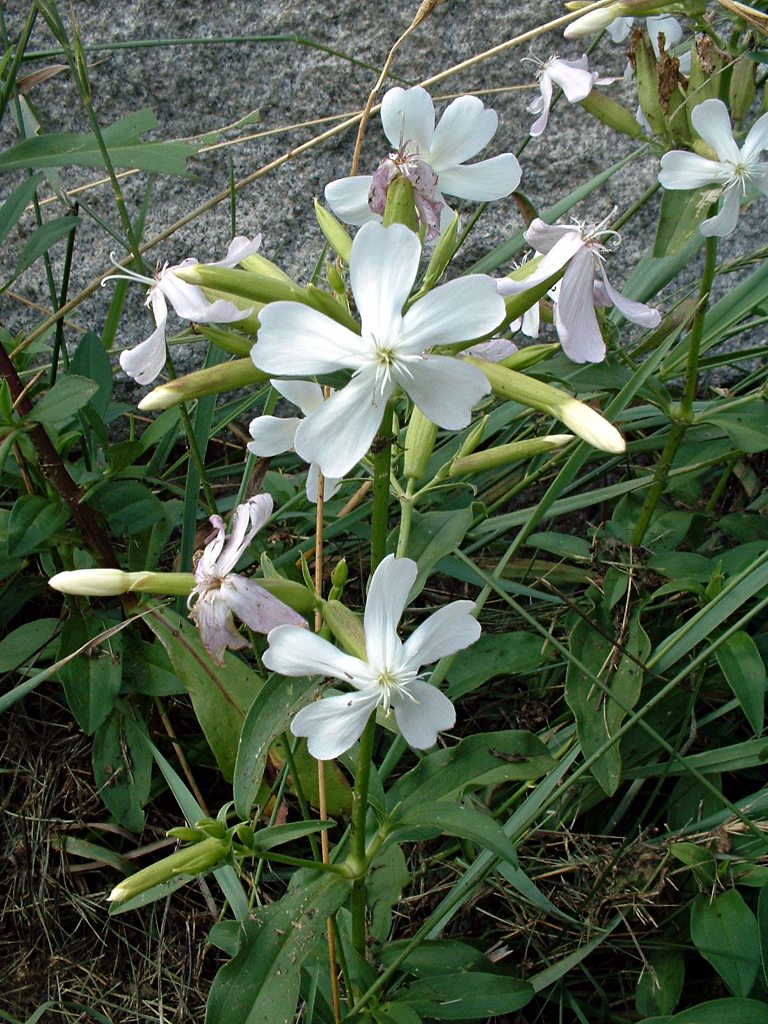 Photographed July 6.
Photographed July 6.
Also called Bouncing Bet, this cheerful pink came over as a garden flower, but is now thoroughly established along roadsides and at the edge of the woods. The blooming season begins in July. The flowers are very pale pink verging on white; the double forms Gray mentions seldom or never occur in the wild plants seen around Pittsburgh. The name “Soapwort” reminds us that a lathery soap can be made from the plant; it is, however, poisonous.
 Photographed July 17.
Photographed July 17.
Gray describes the genus and the species:
SAPONARIA L. Calyx narrowly ovoid or subcylindric, 5-toothed, obscurely nerved, naked. Stamens 10. Styles 2. Pod 1-celled, or incompletely 2-4-celled at base, 4-toothed at the apex. — Coarse annuals or perennials, with large flowers. (Name from sapo, soap, the mucilaginous juice forming a lather with water.)
S. officinalis L. (SOAPWORT, BOUNCING BET.) Flowers in corymbed clusters; calyx terete; petals crowned with an appendage at the top of the claw; leaves oval-lanceolate. — Roadsides, etc. July-Sept. — A stout perennial, with large rose-colored flowers, commonly double. (Adv. from Eu.)
In How to Know the Wild Flowers (1909), Mrs. Dana gives us this description of the plant:
BOUNCING BET. SOAPWORT.
Saponaria officinalis. Pink Family.
Stem.—Rather stout; swollen at the joints. Leaves.—Oval; opposite. Flowers.—Pink or white; clustered. Calyx.—Of five united sepals. Corolla.—Of five pinkish, long-clawed petals (frequently the flowers are double). Stamens.—Ten. Pistil.—One, with two styles.
A cheery pretty plant is this with large, rose-tinged flowers which are especially effective when double.
Bouncing Bet is of a sociable turn and is seldom found far from civilization, delighting in the proximity of farm-houses and their belongings, in the shape of children, chickens, and cattle. She comes to us from England, and her “feminine comeliness and bounce” suggest to Mr. Burroughs a Yorkshire housemaid. The generic name is from sapo—soap—and refers to the lather which the juice forms with water, and which is said to have been used as a substitute for soap.